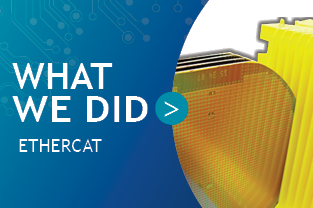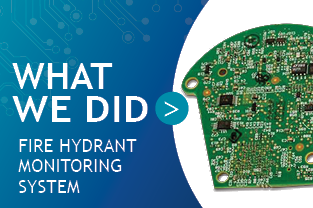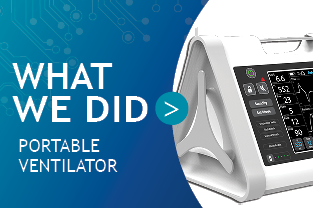By Karl Morant | Jan 24, 2024
Over the past two decades Nuvation Engineering has developed data acquisition systems for a wide range devices and market applications. Based on our experience performing hundreds of engineering design projects, our engineers have identified several key considerations that require special attention during the planning, design, and development of data acquisition systems.
Part 3 of 4: Off the Shelf Solutions vs. Custom Hardware
- When OTS Makes Sense
- Pitfalls of OTS
- When Designing Custom Hardware Makes Sense
- Pitfalls of Custom Hardware
Off the Shelf vs. Custom Hardware
Nuvation Engineering has designed and developed numerous electronics products. Over the course of these projects, we have identified several key considerations when deciding between Off the Shelf (OTS) hardware versus custom hardware.
The electronics market presents a wide variety of OTS hardware that a design team can use to quickly develop a product. Examples include:
semiconductor conveyance system.
- Arduino
- Raspberry Pi
- Adafruit
- Pololu
These vendors offer single-board computers (SBCs) that include operating systems, software development environments, and a variety of motor control, sensor, video, audio functionality as well as other interface boards. The combination of readily available hardware and software shortens the development cycle to proof of concept and time to market. In some cases, a marketable and manufacturable product can be created with only modest design efforts and the addition of an enclosure and cabling.
However, OTS hardware is not always the most cost effective way to manufacture a new product. It may work for very small volumes, but larger volumes tend to call for custom hardware. Custom hardware provides:
- An exact fit for your product
- Lower parts costs
- Improved quality
- Ability to add features
- Improved supply chain logistics
When OTS Makes Sense
Factors that can influence taking the OTS hardware route include:
- Producing in low volumes
- Requirement for shortest or lowest-cost development effort
- Lack of in-house electronic design expertise
When producing at low volumes it can be difficult to recover the non-recurring engineering (NRE) cost associated with developing custom hardware. OTS hardware can be purchased ready-made and configured faster and with less expertise. Often OTS hardware will have an ecosystem of software, device drivers, and online forums to aid in software development.
Pitfalls of OTS
The downside of going with off the shelf hardware is that you sacrifice a fair amount of product development control, including:
- Lead time
- Hardware revisions
- Size of components
- Costs
- Usability
While your initial OTS hardware order would obviously be based on its suitability and availability, the lead time and revision updates of subsequent orders over the lifetime of your product may be completely out of your control, which adds significant business risk. Surprise revision changes, for example, could result in the need for product redesign, reconfiguration, and requalification. The OTS hardware may also reach its end of life (EOL) and be discontinued, which can send your team scrambling for a replacement (and incurring additional engineering costs end effort) at a time not of your choosing.

smart leak detector for monitoring leaking
pipes connected to fire hydrants.
Nuvation Engineering worked with a customer on an autonomous robotics project that required video processing. The client had created a prototype and demonstration unit using OTS hardware that included an NVidia Jetson Nano development board and Jetson Nano CPU on a computer on module (COM). The use of OTS hardware for this demonstration prototype was an excellent decision; it enabled the client to quickly develop a working proof of concept they could share with internal and external stakeholders, with minimal cost and effort. However, utilization of the same hardware in volume production would have inflated costs and delivered a product that was physically too large for its target use-case.
Nuvation helped integrate the OTS NVidia Jetson Nano COM module directly onto a custom PCB that was designed specifically for the target application. This reduced the cost and size of electronics, making it a more suitable size for integration into the robot.
When Designing Custom Hardware Makes Sense
When off the shelf hardware cannot be made to work for a product, some level of custom hardware design is required. Situations that call for custom hardware include:
- Low production costs are more important than up-front development costs. In this scenario anticipated sales will recoup the custom hardware development costs.
- Mechanical requirements cannot be met by OTS hardware.
With custom hardware, the electronics can be sized and shaped to match mechanical requirements. However, product iteration involves additional engineering costs and development time, as well as added costs in manufacturing and testing of the modified PCB. These incurred costs can be offset by higher sales volumes, especially when product iteration is infrequent. Once the sales volumes counterbalance the NRE costs, the overall cost of the custom hardware product will be far less than an OTS product.
Pitfalls of Custom Hardware
Custom hardware has many advantages, but there are risks that must be considered as well. Risks include:
- Supply chain management
- Possible NRE implications
- Hardware engineering expertise
Supply chain management requires expertise with a wide range of technologies as well as relationships with suppliers of electronics components, mechanical enclosures, cabling, PCB fabrication services, mechanical assembly, and QA testing services.
In-house engineering expertise can be acquired by hiring technical experts and mastering new skills, but unless an organization is planning to continuously engage in engineering design it doesn’t make much sense to create an in-house engineering team. Most businesses engage in iterative hardware development every few years, and have an in-house development team focused on application development and continuous improvement. In that scenario outsourcing periodic hardware iteration to an engineering design service provider like Nuvation Engineering is the optimal approach to hardware development.

ventilator for use in developing countries.
- Reduced design times
- Lower NRE costs
- Assistance with supply chain management
- Project management support
- Product testing
- Design for Manufacturing (DFM) expertise
Nuvation Engineering helped a client develop a battery-powered mobile delivery vehicle. The early versions used an off-the-shelf PCB that contained an NXP microcontroller (MCU). This MCU PCB included basic features like I/O and DAQ pins in a 24-pin dip package that enabled it to be installed onto the client’s custom power control board that managed the batteries. Nuvation’s engineers reduced the hardware footprint and complexity by integrating the MCU directly onto the custom power control board. This lowered the overall product cost, broadened the supply chain and freed up space on the power control board by eliminating the need for a dip socket interface.
Conclusion
Off-the-shelf hardware is beneficial for getting small volume products ready for sale quickly. However, this is usually not the best way to develop a product (as opposed to a prototype). Custom hardware design is beneficial for small, medium, and large volumes. For small volume production a cost-benefit analysis must be made regarding the level of engineering effort required vs the benefits. The benefits of custom hardware include meeting exact requirements, including parts costs, size, and mechanical requirements.
When Nuvation Engineering engages with a client, we help them look at all the options available for the various stages of their product development effort, so they can make the decisions best suited for their specific needs. With our in-house supply chain management department and manufacturing partners we are able to provide turnkey product development, from initial proof of concept or prototype to cost-optimized volume production.
Contact us to learn how Nuvation can help you make the right design decisions for your product, and help you transition your OTS-based design to fully custom solutions that will position you for long-term success.
Up next
Part 4 of 4: Data Security
- Vulnerabilities and how to improve security
- The importance of data security
| << Part 2 | Part 4 >> |



